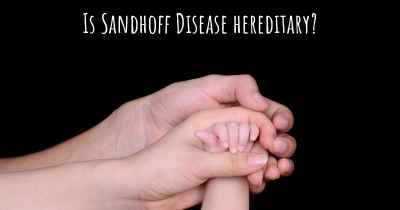Which are the symptoms of Sandhoff Disease?
See the worst symptoms of affected by Sandhoff Disease here

Symptoms of Sandhoff Disease
Sandhoff disease, also known as GM2 gangliosidosis type 2, is a rare and progressive genetic disorder that affects the central nervous system. It is a part of a group of disorders called lysosomal storage diseases, which are characterized by the accumulation of harmful substances in the body's cells due to the deficiency of specific enzymes.
Early Symptoms:
The symptoms of Sandhoff disease typically appear in infancy or early childhood. The initial signs may vary from mild to severe and can include:
- Developmental Delays: Infants with Sandhoff disease may experience delays in reaching developmental milestones such as rolling over, sitting up, crawling, and walking.
- Motor Skills Impairment: Children may have difficulty with coordination and fine motor skills, such as grasping objects or holding a spoon.
- Progressive Muscle Weakness: Muscle weakness may become evident, leading to difficulties in movement and mobility.
- Hypotonia: Low muscle tone, or hypotonia, is commonly observed in affected individuals. This can result in floppy or weak muscles.
- Seizures: Some children with Sandhoff disease may experience seizures, which can vary in frequency and severity.
Neurological Symptoms:
As Sandhoff disease progresses, it primarily affects the nervous system, leading to a range of neurological symptoms:
- Loss of Motor Skills: Children gradually lose the ability to walk, sit, and perform other motor functions.
- Spasticity: Muscle stiffness and spasticity may develop, causing involuntary muscle contractions and abnormal movements.
- Intellectual Disability: Progressive cognitive decline is a hallmark of Sandhoff disease. Children may experience intellectual disability, learning difficulties, and a decline in overall cognitive function.
- Speech and Language Impairment: Difficulties with speech and language development are common, and affected individuals may have limited verbal communication abilities.
- Swallowing Difficulties: As the disease progresses, swallowing difficulties may arise, leading to aspiration and an increased risk of respiratory infections.
Other Symptoms:
In addition to the neurological symptoms, Sandhoff disease can manifest with other signs and complications:
- Cherry-Red Spot: An eye abnormality called a cherry-red spot may be observed during an eye examination. This occurs due to the accumulation of lipids in the retina.
- Hearing Loss: Some individuals with Sandhoff disease may experience progressive hearing loss.
- Visceral Organ Enlargement: In rare cases, enlargement of the liver and spleen (hepatosplenomegaly) may occur.
- Respiratory Issues: As the disease progresses, respiratory complications may arise, including recurrent infections, breathing difficulties, and an increased susceptibility to pneumonia.
Prognosis:
Sandhoff disease is a progressive and life-limiting condition. The rate of disease progression and severity can vary among affected individuals. Unfortunately, there is currently no cure for Sandhoff disease, and treatment focuses on managing symptoms and providing supportive care to improve quality of life.
Conclusion:
Sandhoff disease is a rare genetic disorder that primarily affects the nervous system. Early symptoms may include developmental delays, motor skills impairment, muscle weakness, hypotonia, and seizures. As the disease progresses, individuals may experience loss of motor skills, spasticity, intellectual disability, speech and language impairment, and swallowing difficulties. Other symptoms can include a cherry-red spot in the eye, hearing loss, organ enlargement, and respiratory issues. Sandhoff disease is a progressive and life-limiting condition with no cure, necessitating comprehensive supportive care.
Posted Feb 24, 2017 by Levi Christopher Lucero, Jr. 2185
Posted May 11, 2017 by Mara 700








